我正在使用R创建一条流行病曲线(每天疾病病例数量的直方图),但在格式化x轴方面遇到了一些困难。
我知道ggplot可以提供非常漂亮的图形和易于操作的坐标轴(了解日期并在R中使用ggplot2绘制直方图),但在这种情况下,我更喜欢使用hist()命令,因为我同时描述了两种不同的模式,如下所示(我认为您无法在ggplot中做类似的事情):
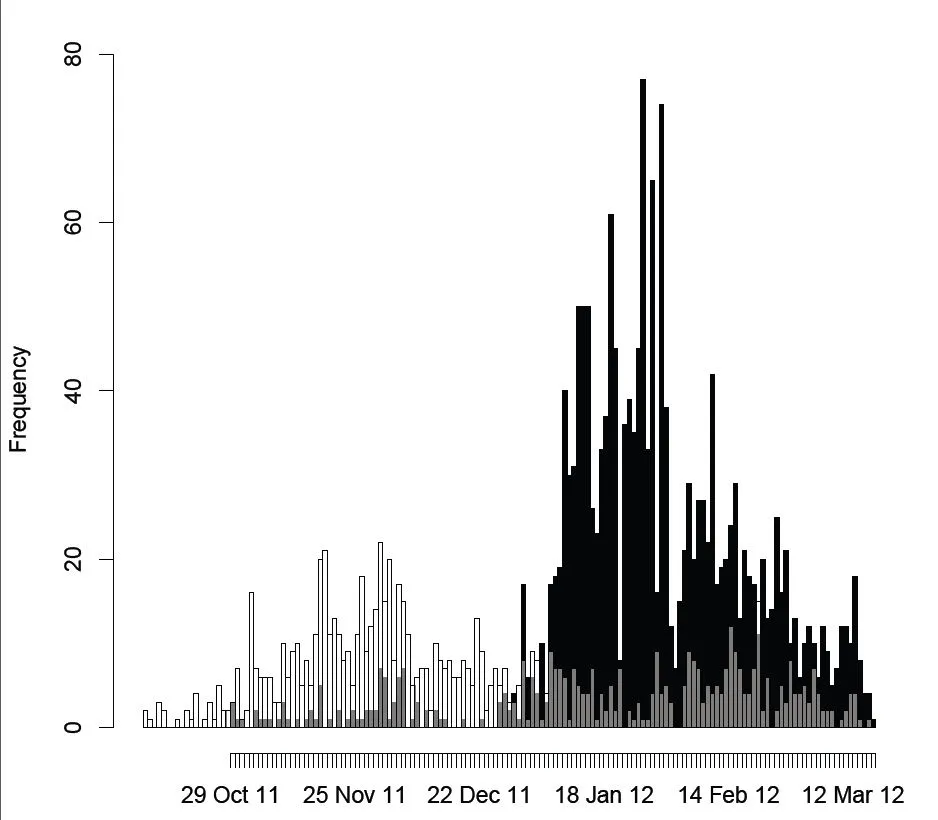
数据以每个疑似病例一行的形式存储在数据库(dat.geo)中,包括发病日期和区域信息(直方图中的黑色或白色)。如下所示:
> head(dat.geo)
number age sex suburb Date_of_Onset
1 1 12 F x 2011-10-11
2 2 28 M x 2011-10-10
3 3 15 F x 2011-10-12
4 4 12 M y 2011-10-25
5 5 10 F x 2011-10-15
6 6 9 M y 2011-10-20
这是我的代码:
pdf(file='1.epi.curve.pdf')
hist(dat.geo$Date_of_Onset[(dat.geo$suburb=="x")], "days",
format = "%d %b %y", freq=T, col=rgb(0,0,0,1), axes=T, main="", add=T)
hist(dat.geo$Date_of_Onset[(dat.geo$suburb=="y")], "days",
format = "%d %b %y", freq=T, main="", col=rgb(1,1,1,.6), add=T, axes=F)
dev.off()
我尝试使用以下代码抑制轴并稍后添加一个操纵轴。
axis(1, labels=T)
axis(2)
但是我得到的结果是这样的(我也不知道如何操作):
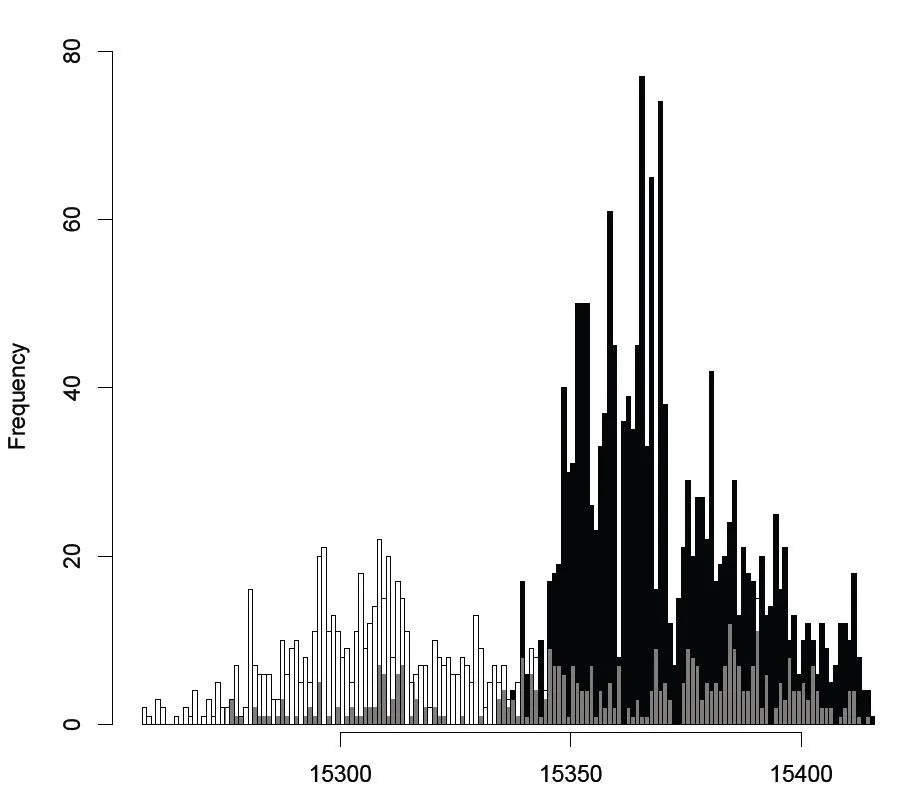
我很感激你的帮助!
谢谢
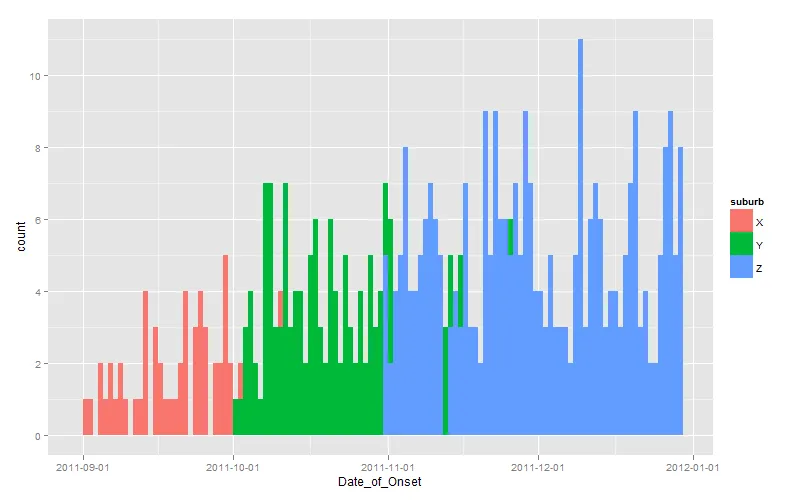
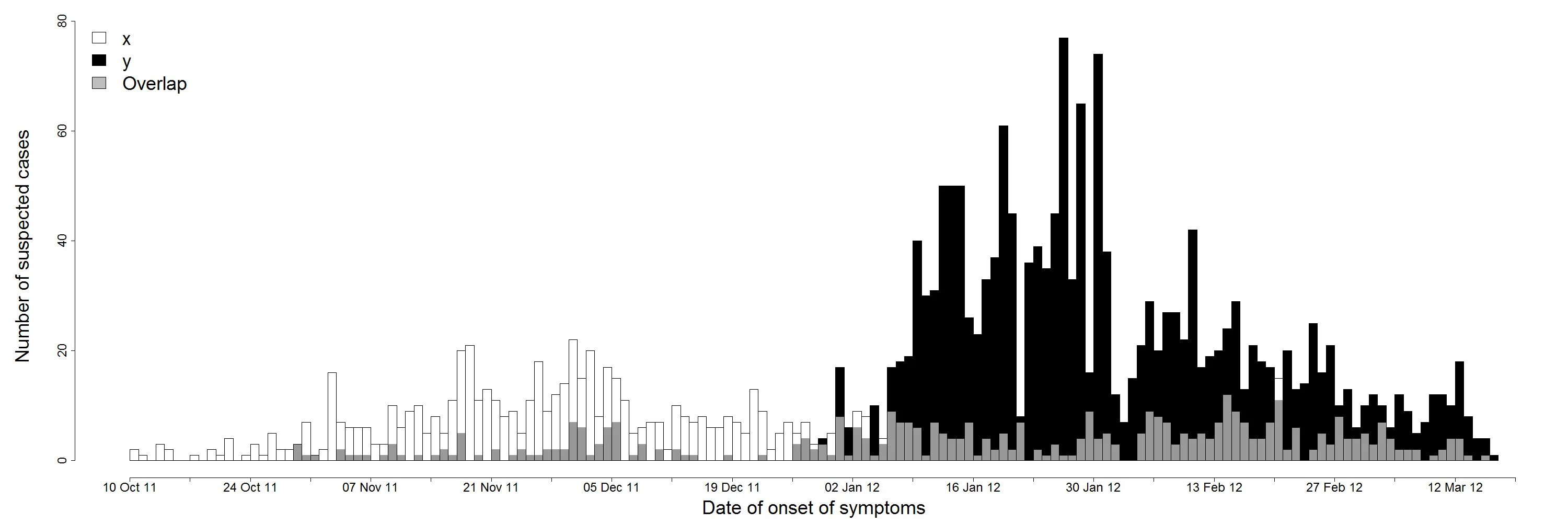
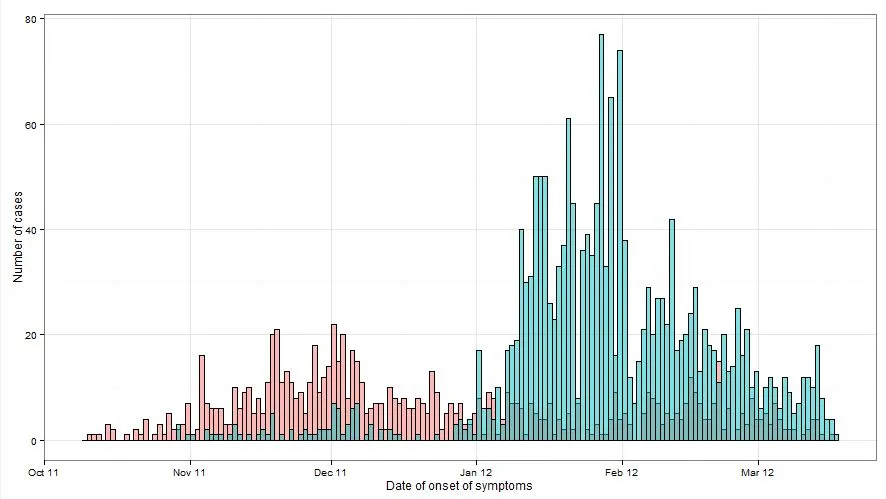
axis(1, at=x, labels=y),其中x是刻度的坐标(数字向量),y是刻度标签(字符向量)。 - Backlinggplot中使用position="identity"来叠加条形图。 - James